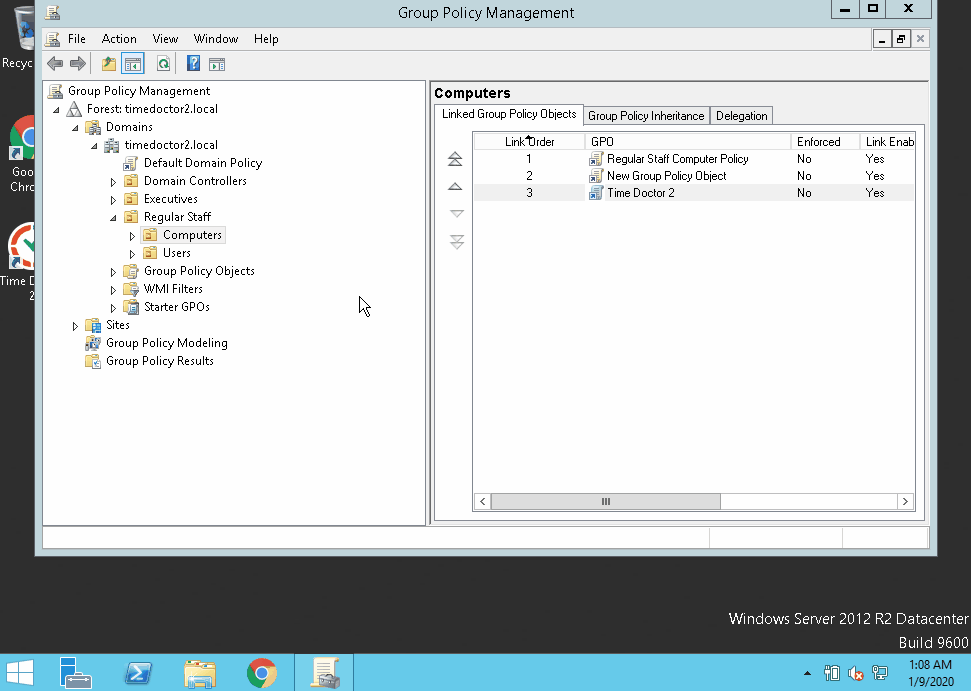In this article, we’ll show you how to install Time Doctor with Group Policy Management for your Active Directory computers.
You’ll need administrator access to your server to complete the steps below.
Install
Step 1
Download the Time Doctor MSI installer.
Step 2
Place it in a shared folder on your server. Make sure that your domain users have Read access to this folder.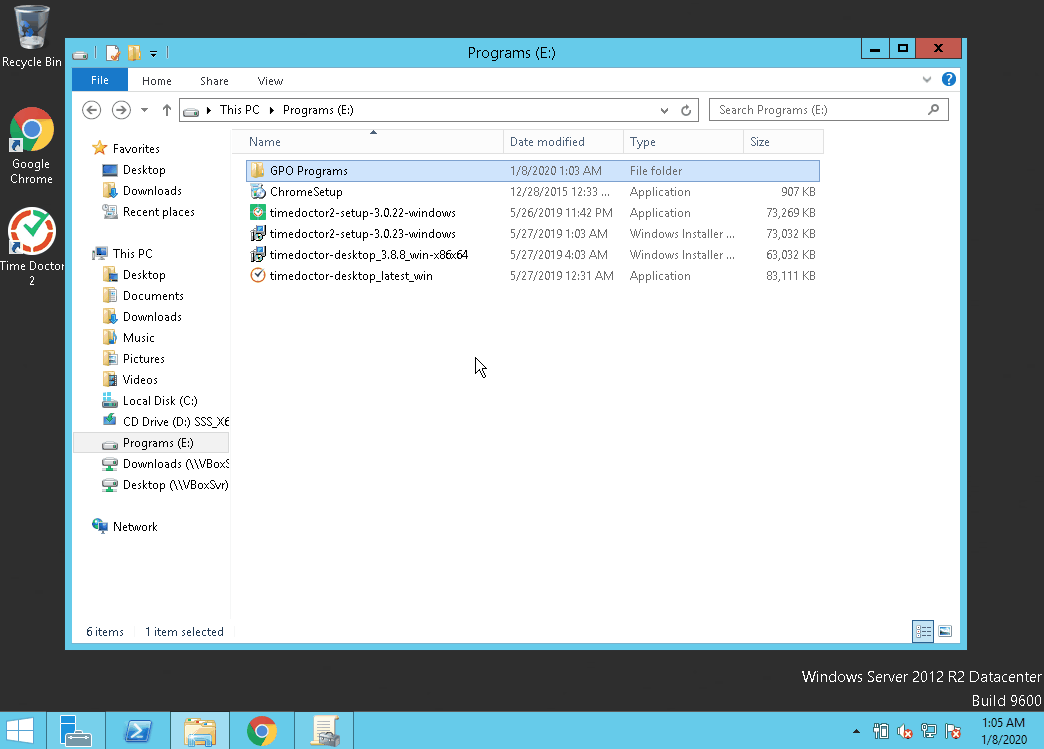
Step 3
- Open Group Policy Management and navigate to the organizational unit (OU) that you want to apply the Time Doctor installation to. In our example, we’ll be applying it to Regular Staff / Computers so that all users who log into а computer have access to the Time Doctor desktop app.
- Make a Group Policy Object (GPO) by right-clicking on the OU and selecting Create a GPO in this domain, and link it here.
Give it a name. In our example, we’ll call it Time Doctor.
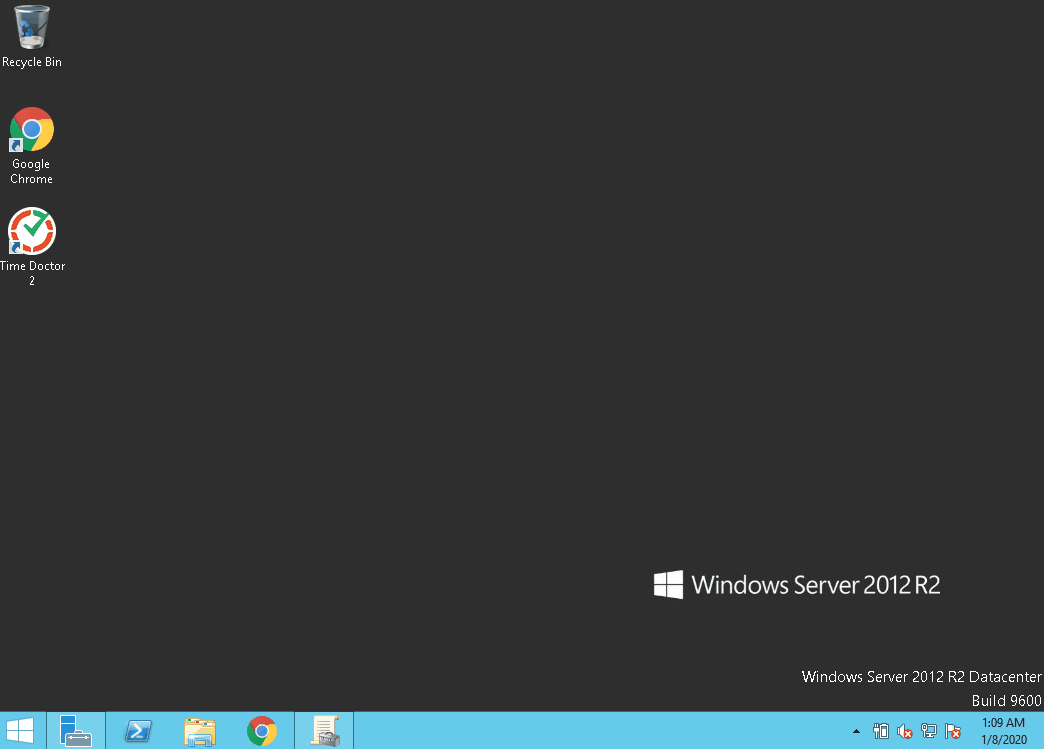
Step 4
Now you need to edit a few Windows Security Settings for this GPO so that it silently installs on a user’s PC without any User Account Control (UAC) prompts.
- Right-click on the Time Doctor GPO and select Edit.
- Navigate to Policies / Windows Settings / Security Settings and then to Local Policies / Security Options. Double-click on Security Options.
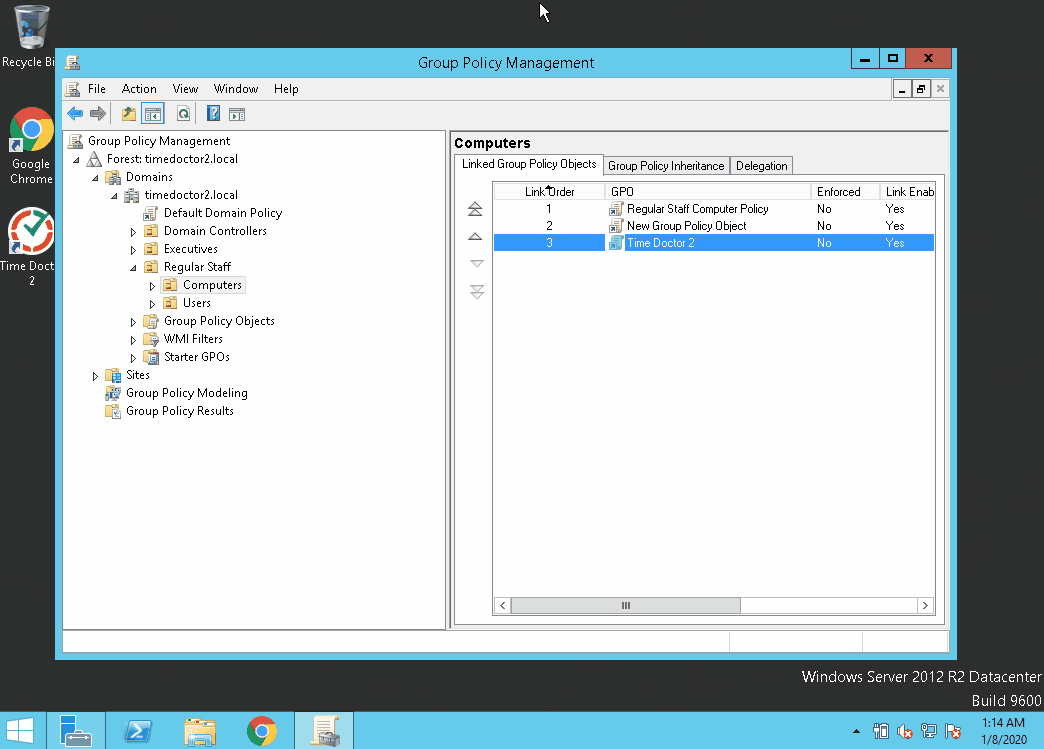
Step 5
In the new window, scroll down to the bottom and change the following policies:
- User Account Control: Behavior of the elevation prompt for administrators in Admin Approval Mode -> Elevate without prompting
- User Account Control: Detect application installations and prompt for elevation -> Disabled
- User Account Control: Only elevate executables that are signed and validated -> Disabled
- User Account Control: Only elevate UIAccess applications that are installed in secure locations -> Disabled
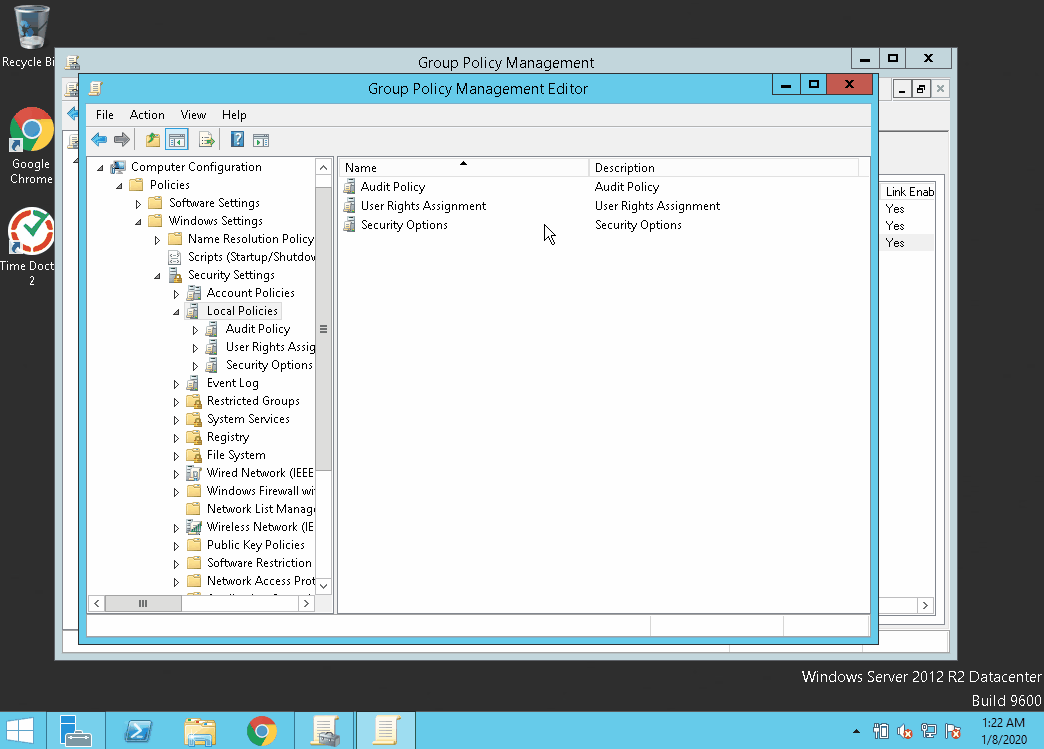
Step 6
Now it’s time to add the Time Doctor MSI package to the list of apps to be installed with the Time Doctor GPO.
- In the Group Policy Management Editor, click on Software Settings -> Software Installation.
- Then right-click in the blank space and select New -> Package...
- Navigate to the folder where you have the Time Doctor MSI file.
(Make sure that the location path is on the network and not on a local machine.) - Click “Open” and select “Advanced.” Under the Deployment tab, you can select “Uninstall this application when it falls out of the scope of management.” Then click “OK.”
- Make sure that domain users have “Read access” to the file in the security tab.
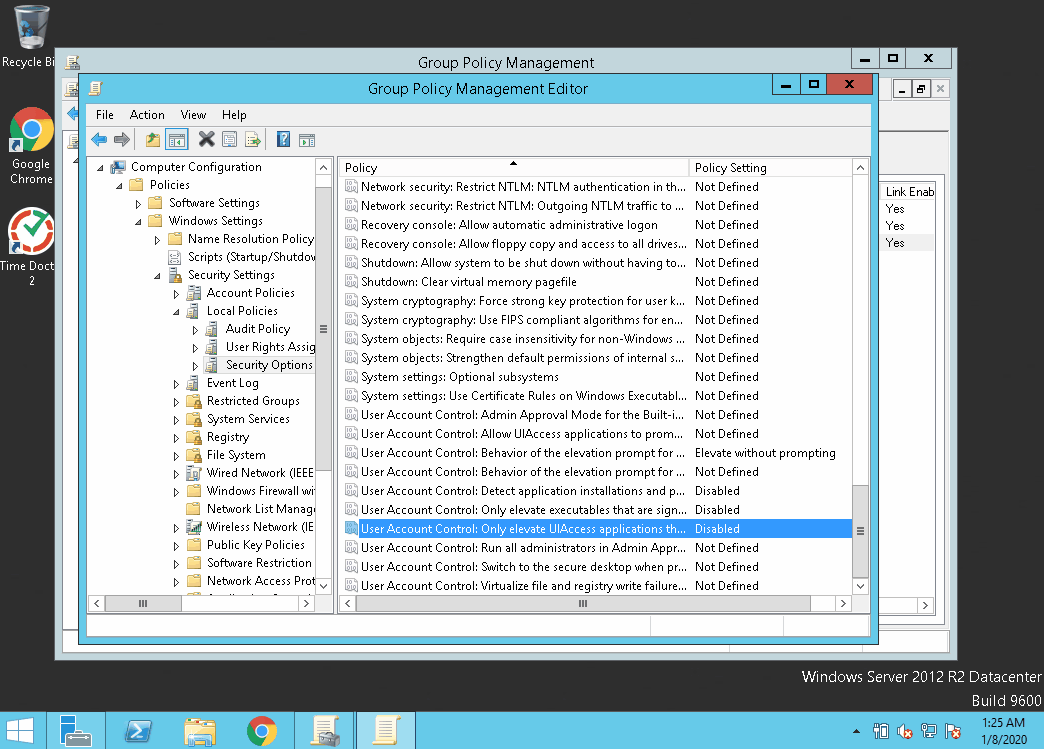
That’s it! Now when your users log into their computers, they should be able to see the Time Doctor desktop app icon and start tracking their time.
It’s a good idea to force a GPO update on any OU that you apply the policy to.
Note: Automatic updates won’t be available with GPO. The server administrator will have to manually download an update for Time Doctor then add it into an upgrades tab for the Time Doctor software package.
Uninstall
To remove Time Doctor from your GPO, simply remove the package from the GPO that you created in the steps above.